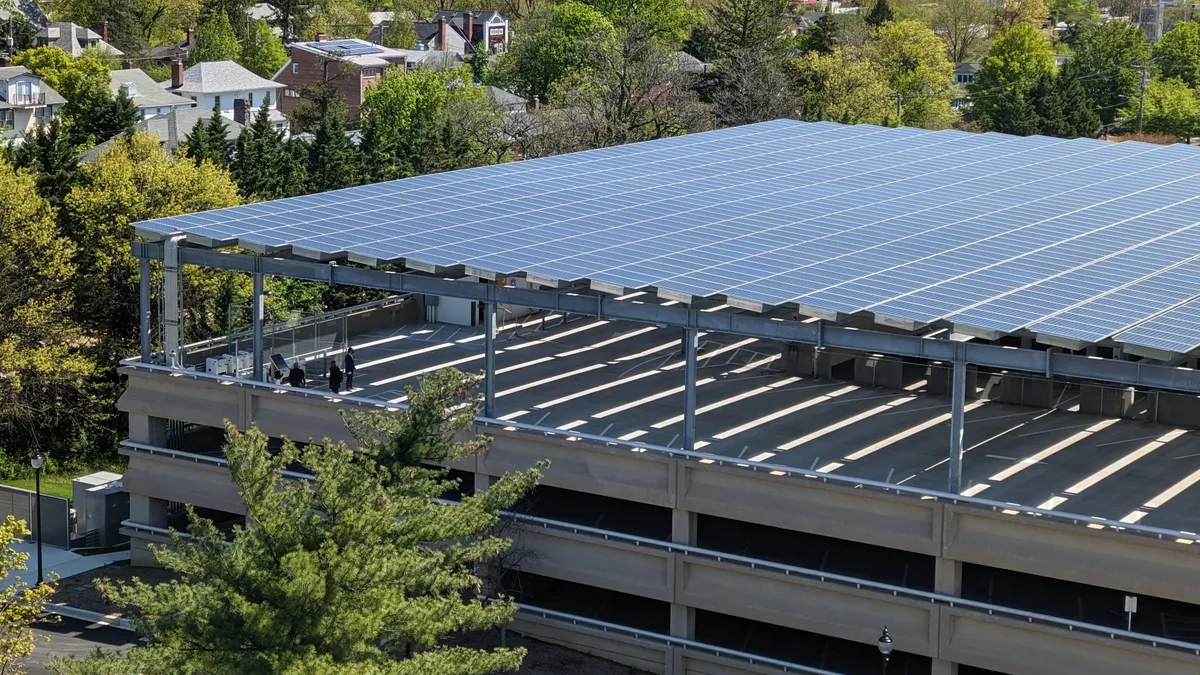More than 12% of the total energy sold in the District of Columbia (D.C. or District) comes from renewable energy sources. The Clean Energy Omnibus Amendment Act of 2018 adopted by the Council of the District of Columbia increased the District’s Renewable Energy Portfolio Standard (RPS), requiring energy suppliers to use 100% renewable energy by 2032 with 10% from solar by 2041. But just putting a solar panel on every roof in the city won’t be enough for the District to meet its climate goals.
As the local utility regulator, the Public Service Commission of the District of Columbia (DCPSC) is uniquely positioned to drive greater adoption of renewable energy, especially solar, in the District. The DCPSC has had to think outside of the traditional regulatory framework to develop new policies, procedures, and incentives to advance additional renewable projects. These measures have helped spur the needed investment in renewable energy generation to meet the District’s clean energy and climate change mandates. This new approach has also allowed the DCPSC to address issues of transparency, affordability, and inclusion.
D.C. has seen significant growth in solar energy generator applications and community renewable energy facilities (CREFs). In 2019 and 2020, the DCPSC received 1,591 and 2,835 renewable applications for its RPS program, respectively. The significant increase in the number of applications reflects both the DCPSC’s success in streamlining the certification process and increased demand for solar energy generators.
Innovation, collaboration, and partnership among stakeholders, energy suppliers, District government agencies, and states in the PJM Interconnection is helping to achieve D.C.’s clean energy goals.
CREFs
CREFs offer many advantages to the customers who use the power generated, the businesses that install solar arrays on their properties, and the community at-large. While the standard visual of widespread solar energy is solar panels on every household rooftop, this scenario doesn’t work for everyone.
CREFs enable more people to access the benefits of solar energy without the cost and maintenance of installing solar panels. This arrangement is beneficial for renters or those who cannot afford a solar installation. Additionally, for customers, joining a program fueled by a CREF is simple, involving only two steps: become a CREF subscriber and get credit for solar energy. Customers don’t need to do anything else to reduce their carbon footprint.
CREFs also benefit the larger community by generating local jobs. Given all these benefits, it’s no wonder that the number of CREFs in the District has jumped from a total of 12 RPS-certified facilities in 2019 to 137 by the end of 2020.
Community Solar
In the District, the community solar program is known as Solar for All. It relies heavily on CREFs and is a great example of CREFs providing a new model of how to deliver renewable power to more residents and ensure that clean energy is accessible to all. Mayor Bowser initiated the program, which started in 2018, giving the District the opportunity to provide families in D.C. with clean power. The program is managed by the District of Columbia Sustainable Energy Utility (DCSEU) and funded by the District’s Department of Energy & Environment (DOEE).
According to DOEE, the goal of Solar for All is to reach 100,000 families by 2032. Over the next few years, the District intends to add another 10,000 participants, provide 55 MW of solar power to D.C. and continue to offer benefits to residents who are most at risk. CREFs and Solar For All demonstrate that solar systems can generate clean power even in high population areas — and are doing so now.
“It’s been incredible to be a part of the growth of solar here in the District, especially the city’s efforts to make it accessible for residents who need it most. By the end of 2021, we expect to have completed more than 160 CREFs over a three-year period as part of the Solar for All program,” said Ted Trabue, Managing Director of the DCSEU. “This work will cut the electricity bills of about 6,000 low- to moderate-income families in half for the next 15 years.”

Regional Collaboration
The DCPSC also works closely with other PJM states through the Organization of PJM States Inc. (OPSI) to jointly monitor wholesale electric power markets.
“All states within the PJM region need to collectively and individually step up their efforts to foster more renewable energy development. Long-term planning efforts to increase the use of renewable energy within the broader PJM region is imperative, as renewable energy sources currently account for about 6% of power within the broader PJM region,” stated Emile C. Thompson, DCPSC Commissioner.
The DCPSC is working with other PJM state public utility commissions, energy industry stakeholders, and PJM on transmission planning and renewable integration to help achieve the District’s renewable energy goals. Eleven states in PJM currently have a renewable energy (RPS program) mandate.
Conclusion
The DCPSC is excited to play a key role in delivering the many benefits of small generator renewable energy interconnection efforts, including the development of CREFs. Through regional collaboration, and by paving the way for CREFs and innovative renewable energy interconnection practices, the DCPSC is facilitating access to renewable energy for the entire community, including traditionally under-served customers.






